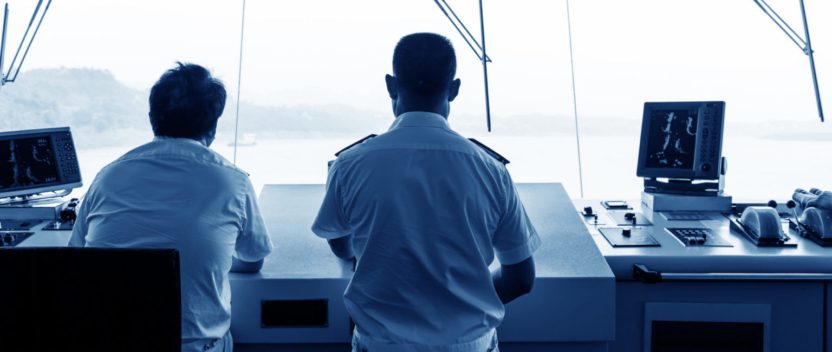How shipping got ECDIS wrong – and how to put it right
As the shipping industry, its stakeholders and industry groups, grapple with the practicalities of embracing unmanned and autonomous vessels, an echo of the recent past provides a timely reminder about the risks of regulating technology.
Regulation effectively freezes mandated systems and practices at a moment in time; though it also allows for a process of feedback and revision. In the case of the Electronic Chart Display and Information System (ECDIS) this process has resulted in a piece of mandated safety equipment that continues to cause concern more than seven years after its adoption.
So long has been the mandation timetable it is easy to forget that ECDIS was developed before the turn of the 21st century, but a combination of political and commercial issues mean it will continue to be an issue well into the future.
This matters not just because, as was discussed in our last post, ECDIS competence among mariners is still worryingly inconsistent. Because ECDIS is a navigation tool, it is critical to a world where manned and unmanned ships ply the same waters.
One of the progenitors of ECDIS was Dr Andy Norris, then at Kelvin Hughes and well-known for his work at the Nautical Institute, CIRM and RIN promoting the safe use of ECDIS use and the ‘S-Mode’ display option.
Speaking to Great Circle in a personal capacity and not reflecting the views of any organisation with which he is associated, Dr Norris points out ECDIS is very much a child of the late pre-1990s, born long before the digital revolution wrought by the internet. Likewise, the first IMO ECDIS performance standard was designed to reflect the prevailing wisdom.
“The digital world has totally changed since then, we just didn’t have the knowledge of the changes that would follow,” says Dr Norris. “The thinking that went into ECDIS was late 20th century thinking even if it reflected the latest knowledge around radar and GPS.
PCs were becoming more powerful but ECDIS was still constrained by affordable processing power and Dr Norris says the requirements were more pragmatic than idealistic, affected by and reflecting available technology. In some ways this turned out to be prescient.
For the first 10 years of its existence ECDIS was little used at sea since the hydrographic offices had failed to act quickly enough to fill the demand for chart data. This led to increased use of ARCS – scanned paper charts – as a stopgap that would have been more effective if not for competing commercial pressures.
The gathering momentum that would see ECDIS mandated was seen as a clear opportunity, not just for other chart data providers but for the equipment manufacturers. This saw a quickening of the push to adopt ECDIS and ENCs but this desire, in part politically-motivated also served to bring the challenges of usage into a clearer focus.
“What surprised users is how much more complex ECDIS is in terms of operator interaction than a radar of the 1990s,” says Dr Norris. “The number of different ECDIS interfaces increases the complexity and that remains the biggest issue today.”
The proposed compromise, S-Mode, where the user is able to re-set the system to an agreed information display standard, is still the subject of regular discussion but has found little favour with some manufacturers who feel it has the potential to blunt their competitive edge.
At one point the suggestion was made that S-Mode should be made compulsory on hardware, though not compulsory to use. The logic of this was to push the vendors to improve their interfaces and give the crew options. The vendors quickly realised that if owners instructed their crew to use S-Mode only on the bridge, others would build cheaper S-Mode units and drive down the price.
S-Mode remains on the agenda at IMO and will be the subject of increased focus next year. Dr Norris fully supports this work but says the challenge continues to be how to increase the commonality of operation without constraining the development of innovative improvements in the human interface.
“Some people think that if companies followed strict human-centred design principles it would create very similar user interfaces on equipment but I disagree. We need to be more prescriptive but, somehow, we must also give the opportunity for innovation to be constructively applied, necessarily always following good human-centred design principles.”
The IMO has not revised the ECDIS performance standard since 2006, though the IEC has revised the more detailed technical standards several times since then. In the meantime, the industry has devised the kind of best practice promulgated by the Nautical Institute and others, putting the emphasis on the obligations of familiarisation training.
The challenge is expecting seafarers to achieve competence with so many different types of ECDIS to be familiar with. For now, the Nautical Institute and others urge pragmatism in application but Dr Norris suggests in future we could see an ‘App culture’ where simple to use interfaces are regularly updated with training built in.
So much for the humans but if there is a need for change in the way technology is developed then the driver is likely to be fewer of them, not more, on the bridge. One lesson of the development of ECDIS is not only to deliver technology that can actually be adopted, but also systems that can adapt to changes in future.
Currently undertaking work on unmanned and autonomous vessels Dr Norris sees greater standardisation as a precursor to automation and ultimately, to autonomy. As standardisation increases, the use of semi-automated systems could see equipment make more decisions, with a consequent reduction in human skills.
“Society is forcing us down the automation route for reasons of safety, environmental protection and cost and we have to accept that accidents are caused by humans being silly. If machines can be shown to be 10 times better at making decisions, there’s no argument that they should making them,” he says.
Rather than promote unmanned ships he is trying – in the light of the pitfalls and mis-steps of the development of ECDIS – to increase understanding that autonomy is a far more complex subject. If ECDIS ultimately becomes easier to use then it will help autonomy develop, but lessons must be learnt.
“I made my first presentation on autonomy 15 years ago and I’ve always had an interest but I’m also worried about autonomy,” he says. “We are naturally going to get there, so let’s make sure it’s right. Not least, let’s benefit from the lessons that we have learnt in the development of ECDIS.”


